World Cup 2022: What to do, see and eat in Qatar
It was 115 degrees on the summer day I arrived in Qatar. That answered my first question: Why had FIFA, among the most hidebound and conservative of international sports bodies, agreed to buck nearly a century of tradition by playing the World Cup in the winter?
The second question was a bit more complicated: Why had Qatar, a tiny, conservative, Islamic emirate in the Persian Gulf worked so hard and spent so much to play host to the tournament?
The World Cup kicks off Nov. 20 and over the following 28 days, more than 1.2 million people are expected to flood into a country that is smaller than Connecticut and has a population about equal to Chicago's. The country and its unfailingly polite people have neither the space nor the patience to deal with more than a million rowdy soccer fans, many of whom know nothing of the country or its culture.
That, however, is the point, said Fatma Al-Nuaimi, executive communications director of the Supreme Committee for Delivery & Legacy, the local World Cup organizing body.
“A lot of people will be coming here and they might have their own perceptions from what they read and what they hear,” she said after a late dinner at an Armenian-Lebanese restaurant in the trendy Katara Cultural Village, a sprawling waterfront collection of shops, restaurants and museums. “When you come here, it’s totally different. You learn about new things, new culture, new traditions. It gives you a different perspective. For a lot of travelers, this is what they would be keen to look for and to explore and to enrich the experience they have outside the stadium.”
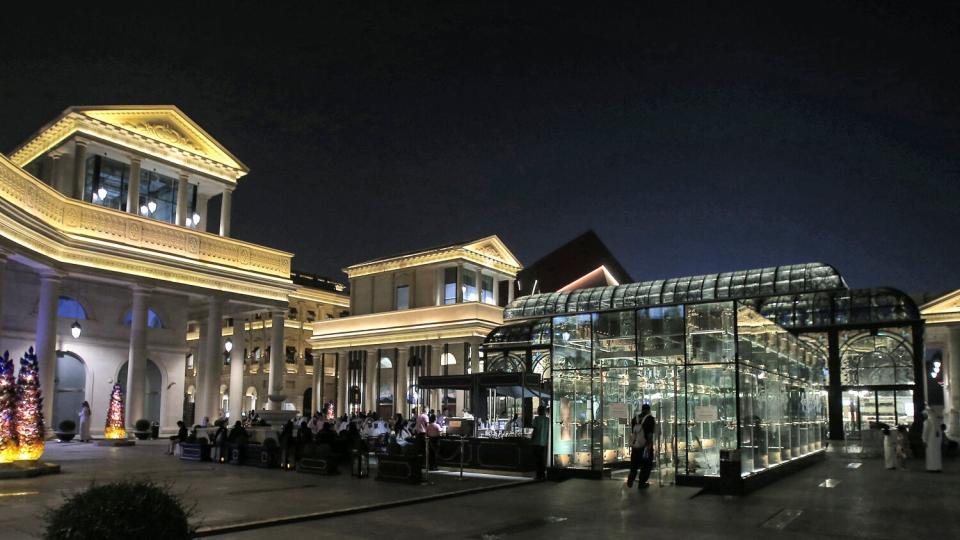
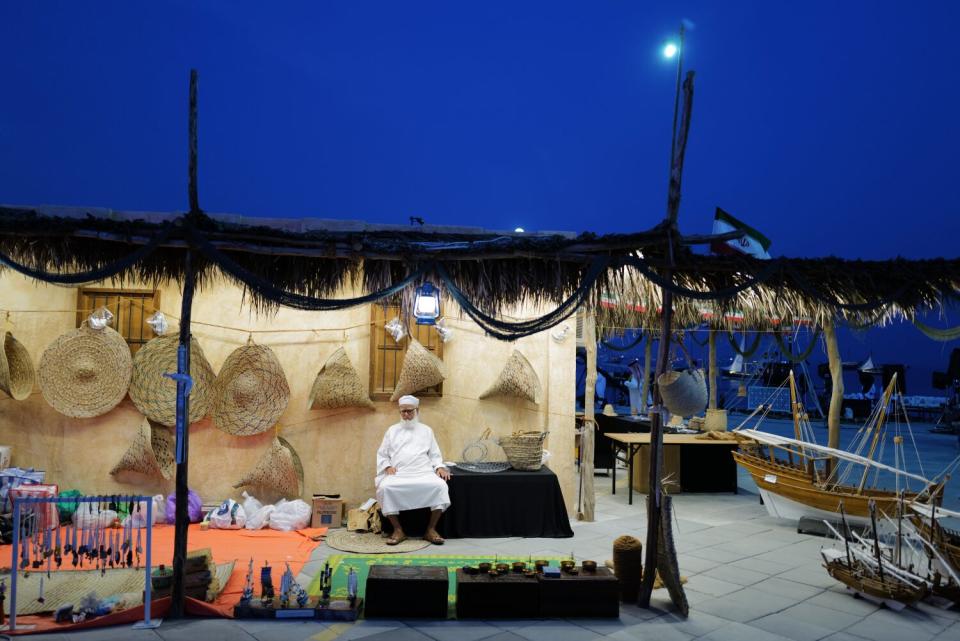
But will it be a Faustian bargain? By law and custom, alcohol consumption is tightly controlled in Qatar, homosexuality is prohibited, public displays of affection are a serious faux pas and some labor regulations are just a small step above indentured servitude.
To welcome the world, the country has given in on all those things. And while that was done to appease international critics, it hasn’t played well at home.
Then there's the organization.
The final test event in September, a soccer match that drew 78,000 people, was beset by a series of logistical disasters, from long lines and air conditioning and PA system failures to concession stands selling out of water by halftime. In response, hundreds of civilians, including diplomats summoned back from overseas, have been called up for mandatory military service operating security checkpoints at World Cup stadiums.
But there’s also an upside. Qatar has become one of richest countries in the world thanks to large deposits of oil and natural gas, resources the government knows are nonrenewable. So it has already begun the long and laborious task of diversifying the economy.
Two years before the controversial vote that awarded the World Cup to Qatar, the country launched National Vision 2030, a multipronged plan to invest $200 billion in economic, social, human and environmental development and one designed, in part, to make the desert emirate a global destination for tourism, education and culture.
Qatar also invested heavily in sports tourism, staging more than 600 international events in the last decade, from the world track championships and a Formula 1 Grand Prix to international bowling, squash, table tennis and equestrian events. That has hurried along infrastructure spending on highway and light-rail construction and expansion of Hamad International Airport.
“These mega-events, there is part of it where it’s actually helping bridge gaps and cultures and bringing people closer together,” Al-Nuaimi said. “There is always a misperception of this part of the world, the Arab world, the Muslim world. Having 1 million fans coming to Qatar from all parts of the world, they will see a different image and having firsthand experience of the country itself.”
The real goal, she said, is to get the world to come sample Qatar, learn about its rich history and culture and hopefully shed prejudices.
But whether Qatar is ready or not, the 32-team tournament will kick off next month and if you're one of the more than 2.8 million people who have tickets — or if you plan on skipping the madness and visiting the country sometime after the tournament — here's a guide to help you navigate a most compelling and complicated country.
What you need to get into Qatar
If you don’t have World Cup tickets by now, you’re probably going to have a hard time getting them. More than 90% of the approximately 3 million tickets had been claimed by mid-October, but FIFA is promising to continue selling at FIFA.com/tickets, through the end of the tournament on Dec. 18. Some tickets can also be found on the secondary market, although FIFA is urging fans to stay away from unauthorized websites.
But a ticket won’t be enough to get you into a game — or even the country. For that you’ll also need a digital Hayya fan ID card, which can be applied for at hayya.qatar2022.qa. World Cup visitors will need a valid ticket application number and a Hayya voucher code to book accommodations.
To enter the country under normal circumstances (a.k.a. when there is no World Cup), U.S. citizens need a visa waiver, also known as visa on arrival. You don’t have to apply for that ahead of time as the entire process takes place when you arrive in Qatar. You will need a valid passport, good for at least six months, confirmation of a return ticket and a debit or credit card to pay the $28 fee for a tourist visa. The visa is valid for 30 days and can be extended.
Starting Nov. 1, you will not need to show proof of COVID-19 vaccination and a negative PCR test to enter the country.
Here’s a tip for those traveling to Qatar on Qatar Airways: The airline offers something called Al Maha Services. For an additional fee, a dedicated airline employee will guide travelers through expedited immigration and customs formalities both on arrival and at departure. That can be a lifesaver, especially after the nearly 17-hour flight from Los Angeles.
Where to stay
Despite a massive construction boom during the 12-year run-up to the World Cup, Qatar has just more than 40,000 hotel rooms, far short of the inventory needed for an event like the World Cup. So the country has come up with a number of novel options that include housing visitors in fan villages and Bedouin-style desert tents. There are also apartments and villas with one to six bedrooms at prices ranging from $84 to $875 a night, and 4,000 staterooms on two cruise ships anchored in Doha Bay.
More than a half-a-dozen airlines have added 160 short daily shuttle flights from Dubai, Jeddah, Kuwait, Muscat and Riyadh, allowing fans to stay in neighboring countries and fly into Doha before and after games.
If all that sounds like too much of a hassle, or if you really don’t like soccer, visiting Qatar after the World Cup is a breeze.
What to do and see in Qatar besides the World Cup
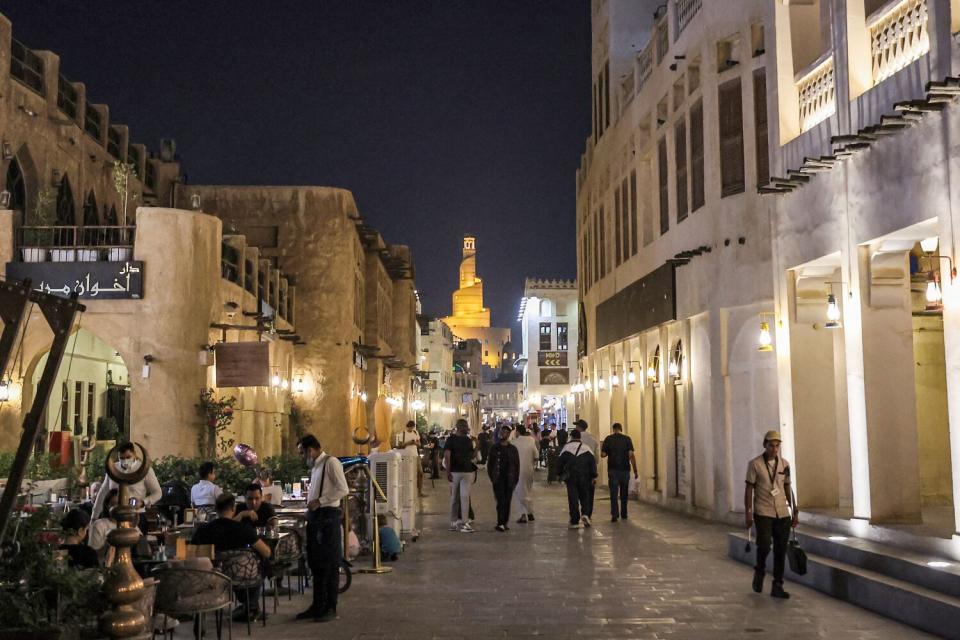
Sampling Qatar means sampling its history, and Qataris are only too happy to share. My favorite haunt, a place I couldn’t spend enough time in, was the Souq Waqif, the city’s ancient marketplace.
A maze of narrow alleyways linked to a wide main plaza, the Souq long served as a trading post for Bedouin arriving by camel and travelers in small boats. Its merchants still gather every day, as they have for centuries, dressed in the traditional long white thobe and a loose headdress called a gutra, drinking strong Qatari coffee and arguing about the day’s news while selling traditional garments, jewels, spices, handicrafts and souvenirs.
The Souq, now easily accessible on the metro’s gold line, is also home to an array of dining options featuring food from Thailand, Turkey, India, Iran, Italy, Lebanon, Latin America, Morocco and Syria and elsewhere.
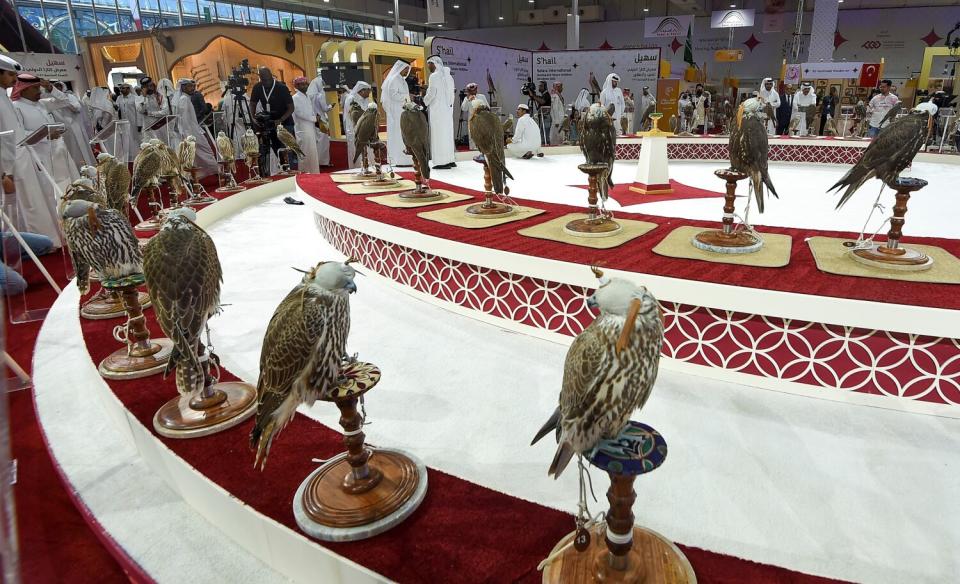
On one edge of the marketplace is the Falcon Souq — the word “souq” translates as marketplace — where you can view, photograph and even hold the birds, which have a revered place in Qatari culture. Nearby is a state-of-the-art falcon hospital and just beyond that is a camel pen, home to dozens of animals.
If the Souq Waqif is a real-life history lesson, in recent years Qatar has also built several world-class museums to teach the country’s culture and heritage in a more formal way.
The National Museum of Qatar, which opened in 2019, is worth a visit just for the stunning work of architect Jean Nouvel, whose design was inspired by the desert rose. Inside, the museum tells Qatar’s story in a milelong journey through a series of galleries that provide multisensory experiences from multiple perspectives.
Equally impressive is the nearby Museum of Islamic Art, another architectural wonder by I.M. Pei, who was coaxed out of retirement at 91 to design the building. Constructed on an island off an artificial peninsula, the museum sits at the end of the Corniche, Doha’s scenic bayside promenade, and is accessible by two small bridges.
The 480,000-square-foot museum, which reopened in early October after an 18-month renovation, houses more than 14 centuries of Islamic art from three continents, including metal work, ceramics, jewelry, textile and glass, as well as a priceless Quranic manuscript.
A more unique experience can be had at the Msheireb Museums, four historic heritage houses in the old part of the capital dedicated to the cultural and social development of Qatar. Of the four the Bin Jelmood House, which focuses on the history of slavery in the Arab Gulf, a practice that wasn’t outlawed in Qatar until 1952, is a must-see.
Inside, a projector beams a passage from an 1864 letter written by Abraham Lincoln: “If slavery is not wrong, nothing is wrong.” The exhibitions are particularly timely since much of Qatar’s World Cup infrastructure was built by migrant workers employed under the kafala system, an exploitative and barely-legal form of indentured servitude that, in many ways, replaced slavery. International criticism ahead of the World Cup led to reform of the kafala system and a new minimum-wage structure, though abuses remain widespread.
Another unique gem is the 3-2-1 Qatar Olympic and Sports Museum housed in Khalifa International Stadium, site of eight World Cup matches. At more than 200,000 square feet, the museum, which opened in March, is one of the largest in the world dedicated to sports. Among the items in the collection are a soccer ball from England’s 1888 FA Cup final, the bobsled used by the Jamaican team in the 1988 Winter Games, a baseball bat from Babe Ruth, boxing glove from Manny Pacquiaoand a Steffi Graf tennis racquet.
And while the focus of the interactive exhibits and artifacts is on global sport, the museum includes sections on such traditional Qatari favorites as falconry, pearl diving and camel racing.
Speaking of history, before the discovery of oil and natural gas Qatar’s economy was built around pearls. In the latter half of the 19th century, nearly half the population was involved in the pearl trade, with divers sailing dhow boats into the warm gulf waters and descending as deep as 130 feet to harvest clams for the treasure they hid inside.
That’s gone now but the old dhow harbor remains. Bay cruises in the long, thin-hulled boats with Doha’s futuristic skyline as a backdrop are a good way to mix the past and present.
Part of that modern skyline is the Pearl, a small man-made island divided into 12 districts of residential towers, hotels, luxury-brand shops from Maserati and Rolls-Royce showrooms to trendy restaurants and cafes offering everything from South American and Lebanese cuisine to confectioneries.
Between the Pearl and the towering office buildings of the West Bay is the Katara Cultural Village, home to restaurants, art galleries and cultural organizations as well as an open-air amphitheater, an opera house, a multipurpose cinema, a multipurpose conference hall and a beach.
Want to live the history of Qatar? Well, time recedes quickly when you leave the city for the desert. Consider a half-day sunset safari, camel rides, sandboarding or a tour of the inland sea, a Persian Gulf inlet at the border between Qatar and Saudi Arabia.
During the World Cup, more than 90 special events including music festivals, cultural displays and street performances will also take place.
Where to eat
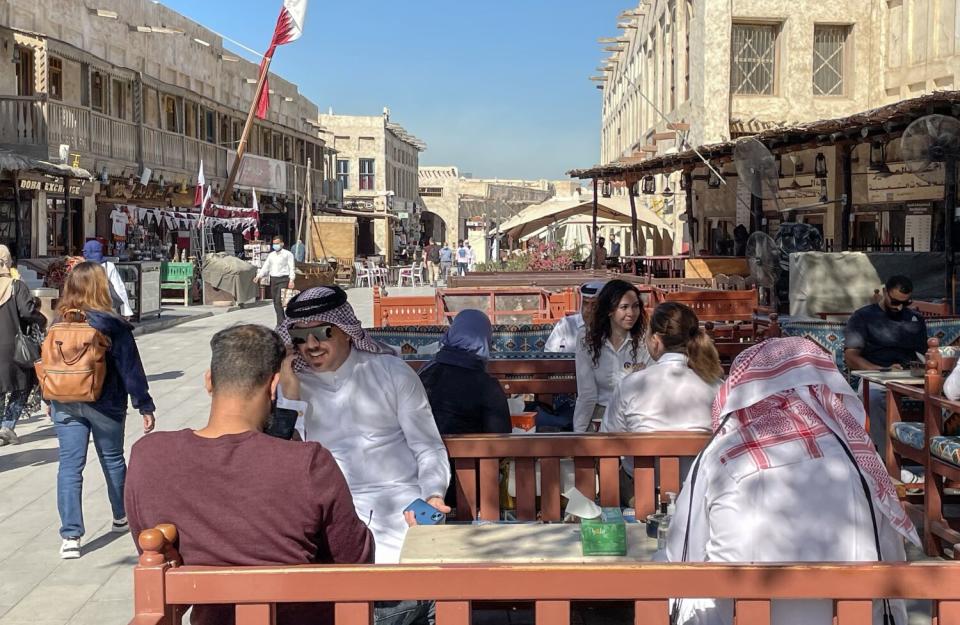
Qatari cuisine is mix of traditional Arab food. Machboos, the national dish, consists of rice and vegetables and either lamb or chicken. Seafood and dates are also staples. But given the ethnic makeup — more than 2.5 million of the country’s 2.9 million residents are not Qatari citizens — the country has become a gastronomic melting pot featuring world-class offerings from dozens of countries.
As mentioned earlier, the Souq Waqif has a wide array of options served in a comfortable but traditional (read: budget-conscious) style. I’d recommend starting there since even the most finicky palates will find something to their tastes.
The Katara Cultural Village is another reasonably priced food court worth roaming, with cafes, chocolatiers, sandwich and fast-food places serving Greek, Italian, Egyptian, Mexican dishes and more, as well as upscale restaurants offering Palestinian, Western European, Italian and Asian food.
My favorite place was Mamig, a home-style restaurant — the name means grandmother in Armenian — serving a deep menu of Armenian and Lebanese offerings.
Many of Doha’s pricier restaurants are located in hotels, beginning with the Saffron, which offers both delectable Thai food and a breathtaking view from the top floor of the 31-story Banyan Tree hotel in Mushaireb, the heart of the old city.
The Spice Market in the Doha Hotel and Residences in the West Bay serves Southeast Asian-inspired fare from chef Jean-Georges Vongerichten. Also in the West Bay, Hakkasan, a Michelin-starred brand with locations worldwide, serves Chinese food in a uniquely designed dining room or on the terrace.
Nobu, the Japanese restaurant at the Four Seasons Hotel on the Corniche, offers a unique experience beginning with your entrance up a floating driveway, over a bridge crossing a reflecting pool and into a three-story building designed by David Rockwell. The most popular dishes are black cod yuzu miso and wagyu beef tacos.
In the trendy Pearl District, Toro Toro serves authentic Latin American dishes from chef Richard Sandoval before a stunning view of the bay. Sandoval has another place in the West Bay called Zengo that serves Asian fare, including sushi, sashimi and curry on the 61st floor of the Kempinski Residences & Suites.
Where to drink
Qatar is a Muslim country where Sharia law holds sway, so alcohol consumption is tightly controlled and it cannot be purchased in stores.
Licensed hotel bars and restaurants are the only places allowed to sell alcohol, but not all of them do. It’s not available in the Souq Waqif, for example, and of the restaurants listed above, Mamig does not serve alcohol. Call ahead or check a restaurant’s policy before making reservations — and if you do find a place that serves alcohol, be prepared to pay $15 or more for a simple beer unless you take advantage of happy hour, which most bars and restaurants offer.
Local laws have been eased somewhat for the World Cup, with organizers allowing beer consumption at the Arcadia Electronic Music Festival, a fan fest about two miles outside Doha, will feature three performance stages and beer will be served there between 10 a.m. and 5 a.m.
Beer is also available at the official FIFA fan festival at Doha’s Al Bidda Park and to ticket-holders at select areas inside the perimeters of World Cup stadiums prior to kickoff and after the final whistle. Only nonalcoholic beverages will be served inside the stadiums themselves.
Keep in mind there is zero tolerance for drinking in public outside these areas and being drunk in public is a crime in Qatar.
Need more information? The Qatar 2022 Contact Center offers 24/7 support in eight languages.
Additionally, from Nov. 1 to Dec. 25, there will be a Consular Services Center at the Doha Exhibition and Convention Center which will provide direct access to embassy staff from the 32 qualified countries and countries with the highest number of ticket sales. The center will operate daily from 10 a.m. to 10 p.m.
This story originally appeared in Los Angeles Times.

